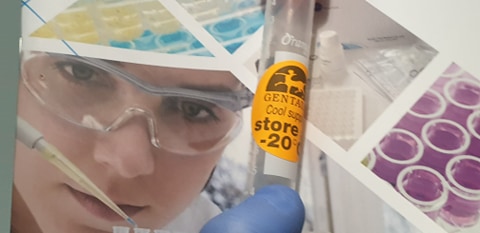ELISA kits are one of the most versatile and used immunoassays in research and diagnostic laboratories for the detection and quantification of different bioanalytes. However, in view of the increasing need to detect analytes present in very low concentrations, these assays have some limitations in terms of sensitivity.
This limitation has been overcome with the development of variations of traditional ELISA immunoassays such as CLIA assays.
Do you know the differences between ELISA and CLIA tests? In this post we will tell you.
Before analyzing the differences between ELISA and CLIA assays, let’s look at some characteristics of each of these immunoassays:
Elisa Immunoassay
ELISA assays use antibodies conjugated to an enzyme that, once the corresponding chromogenic substrate has been added, catalyzes a chemical reaction, producing a visible and quantifiable color change in the sample.

ELISA assays can be used both to detect the presence of an analyte in the sample (qualitative), and to measure the concentration at which it is found (quantitative). In the latter case, it is necessary to generate a standard curve using known antigen concentrations.
Clia Immunoassay
In recent years, CLIA trials have gained ground in fields such as biomedical research, clinical diagnosis, food safety, or pharmaceutical analysis, among others, due to their high sensitivity and specificity.
CLIA assays start from the same technical basis as ELISAs, with the difference that in this case the enzyme coupled to the detection antibody catalyzes a chemiluminescent reaction that results in the emission of photons producing light instead of a visible color change.
Compared to other analytical methods, luminometry provides exceptionally high sensitivity (1pg / mL) with a wide detection range and the use of inexpensive instrumentation.
Differences Between Elisa And Clia Tests
Now, let’s see the main differences between ELISA and CLIA tests:
1.- SUBSTRATE
- ELISA : Uses chromogenic substrates such as TMB or ABTS.
- CLIA : Uses luminescent substrates such as luminol or acridinium ester.
2.- SIGNAL
- ELISA : Color change is measured.
- CLIA : Light emission is measured.
3.- SENSITIVITY
- ELISA : It is a highly sensitive assay.
- CLIA : It is an ultrasensitive test.
4.- ADVANTAGES
- ELISA :
- Sensitive technique (≥ 500pg / mL)
- Quick and easy to automate
- Widely used and standardized
- CLIA :
- Ultra-sensitive technique (≥ 1pg / mL)
- Highly stable reagents
- Greater dynamic range
- Under background
- Easy to automate
5.- DISADVANTAGES
- ELISA :
- The reading should be done in a short period of time from the enzyme-substrate reaction.
- CLIA :
- Requires specific equipment with chemiluminescence reader.
